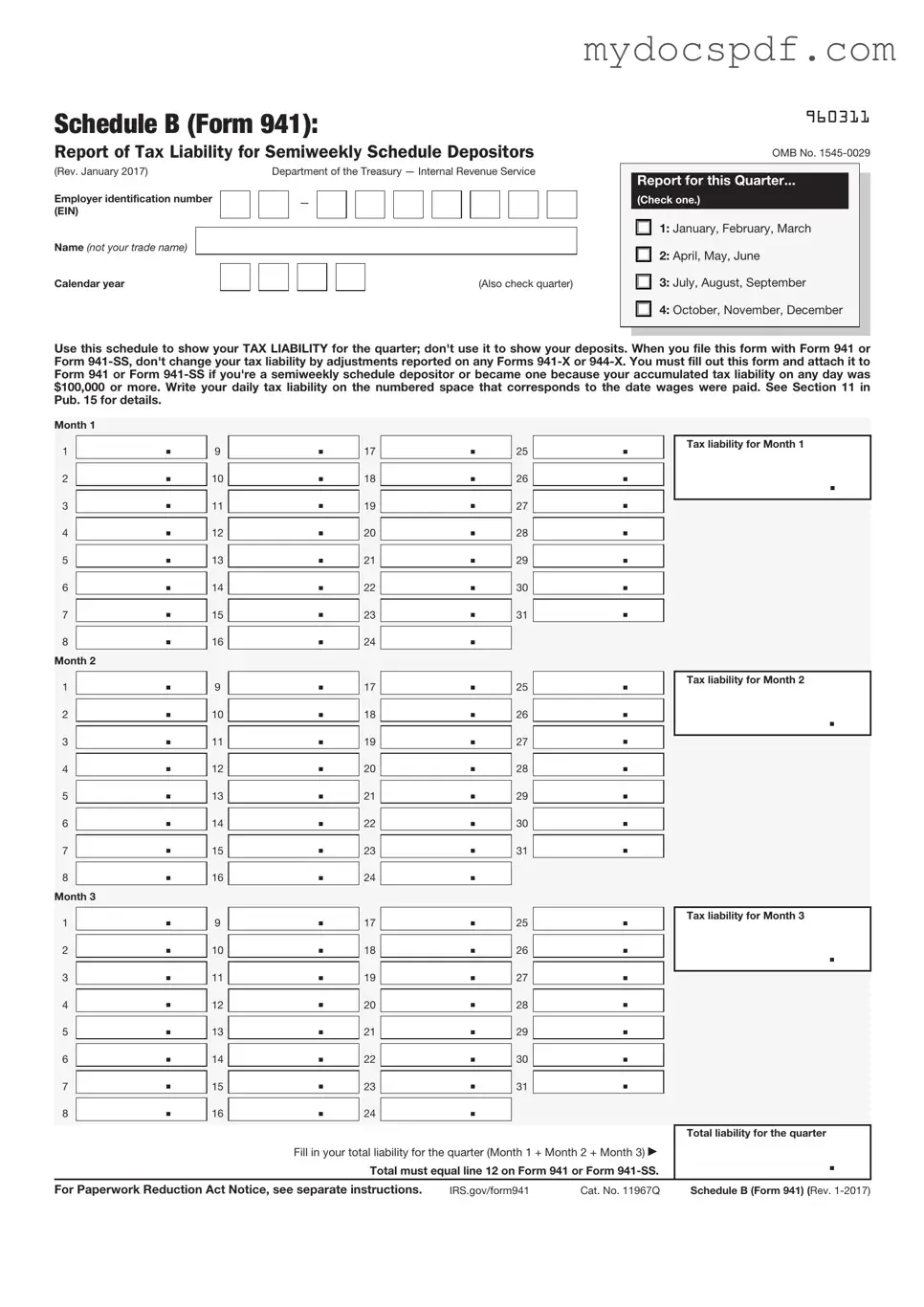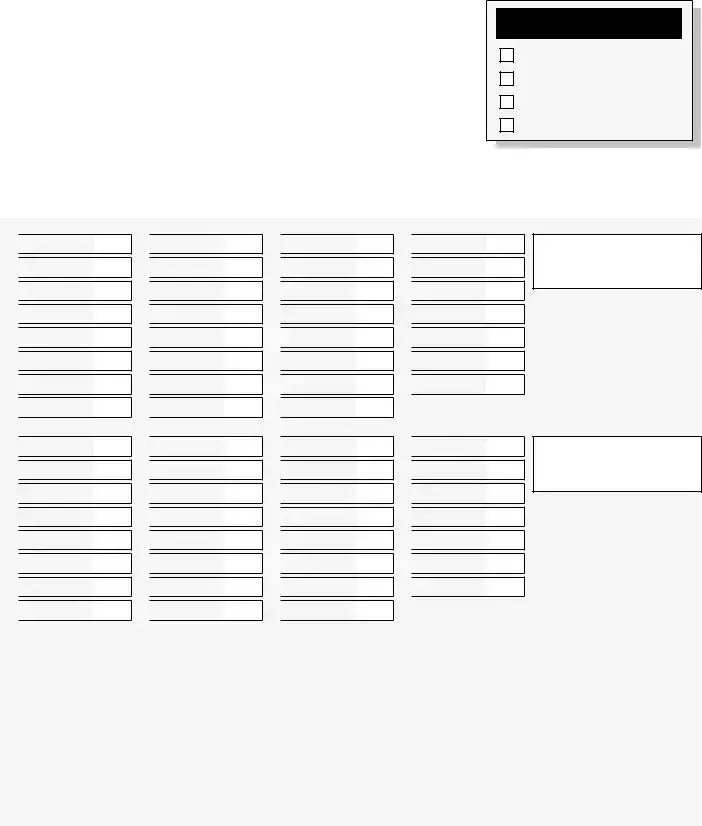Get IRS Schedule B 941 Form in PDF
The IRS Schedule B (Form 941) is a document used by employers to report their tax liabilities related to federal income tax withholding, Social Security, and Medicare taxes. This form provides essential information about the employer's tax obligations for each quarter of the year. Understanding how to accurately complete Schedule B is crucial for compliance with federal tax regulations.
Access Editor Here


 .
. .
. .
. .
. .
. .
. .
. .
. .
. .
. .
. .
. .
. .
. .
. .
. .
. .
. .
. .
. .
. .
. .
. .
. .
. .
. .
. .
. .
. .
. .
. .
. .
. .
. .
. .
. .
. .
. .
. .
. .
. .
. .
. .
. .
. .
. .
. .
. .
. .
. .
. .
. .
. .
. .
. .
. .
. .
. .
. .
. .
. .
.